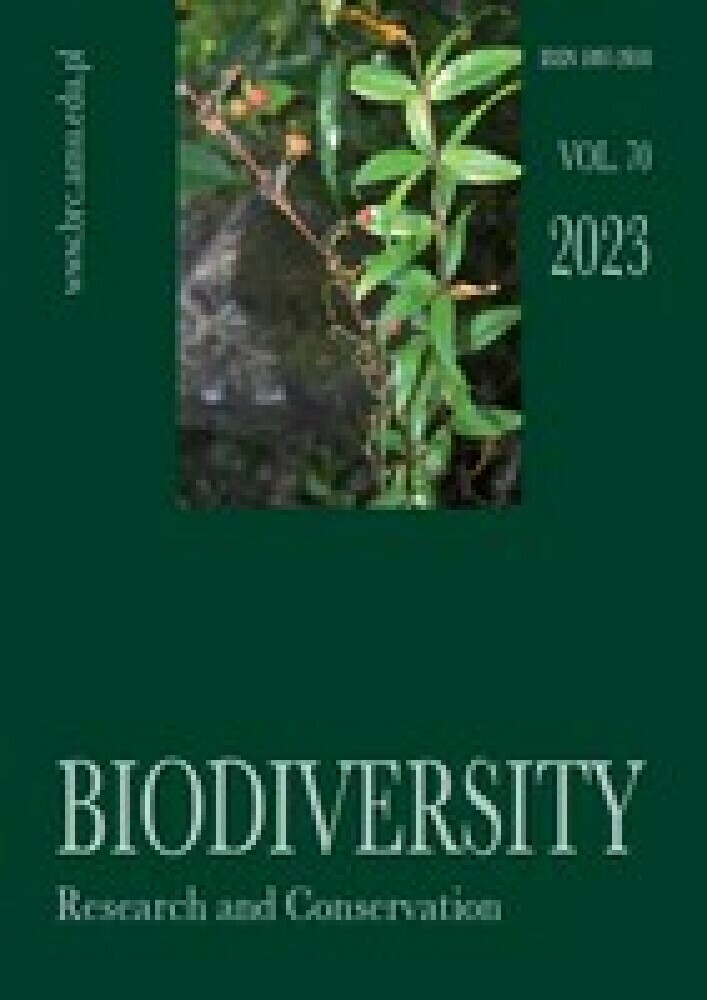Abstract
The variability of fruit stone characteristics of medieval fossil forms and modern ones was analysed in a small Prunus spinosa (blackthorn) population in the vicinity of Castle Kolno near Stare Kolnie in Opole Province. A modern putative hybrid resulting from natural crossing with cultivated plums was discovered, corresponding to some fossil morphotypes. The analysis of the correlations of features indicated developmental relationships between them. The pattern of variability of the examined stones in the ordination space confirmed the development of the Prunus spinosa-Prunus domestica complex as an element of a dynamic syngameon. The population also showed variations in leaf morphotypes, which may be used in taxonomic analysis.
References
Grant V. 1981. Plant speciation. Columbia University Press, New York.
Hanelt P. 1997. European wild relatives of Prunus fruit crops. Bocconea 7: 401-408.
Hübner S. & Wissemann V. 2004. Morphometrische Analysen zur Variabilität von Prunus spinosa L. – Populationen (Prunoideae, Rosaceae) im Mittleren Saaletal, Thüringen. Forum Geobotanicum 1: 19-51.
Kosina R. 2005. Some aspects of leaf and stone morphometrics of Prunus spinosa L. and its two relatives. In: W. Prus-Głowacki (ed.). Variability and evolution – new perspectives, pp. 347-359. Wyd. Nauk. UAM, Poznań.
Kosina R. & Marek L. 2021. Crops, weeds and gathered plants in the vicinity of the mediaeval Castle Kolno, near Brzeg, S-W Poland, and a morphometric approach for some taxa. Genet. Resour. Crop. Evol. 68: 2959-2982.
Körber-Grohne U. 1979. Samen, Fruchtsteine und Druschreste aus der Wasserburg Eschelbronn bei Heidelberg. Forschungen und Berichte der Archäologie des Mittelalters in Baden-Württemberg 6: 113-127.
Kroll H. 1980. Mittelalterlich/frühneuzeitliches Steinobst aus Lübeck. Lübecker Schriften zur Archäologie und Kulturgeschichte 3: 167-173.
Kühn F. 1988. Wurzelechte Pflaumen in Mähren. Veröff. Land.-chem. BA Linz 19: 117-123.
Matuszkiewicz W. 2001. Przewodnik do oznaczania zbiorowisk roślinnych Polski. In: J. B. Faliński (ed.). Vademecum Geobotanicum 3, 537 pp. Wyd. Nauk. PWN, Warszawa.
Nielsen J. & Olrik D. C. 2001. A morphometric analysis of Prunus spinosa, P. domestica ssp. insititia, and their putative hybrids in Denmark. Nord. J. Bot. 21: 349-363.
Pollmann B., Jacomet S. & Schlumbaum A. 2005. Morphological and genetic studies of waterlogged Prunus species from the Roman vicus Tasgetium (Eschenz, Switzerland). J. Archaeol. Sci. 32: 1471-1480.
Popescu I. & Caudullo G. 2016. Prunus spinosa in Europe: distribution, habitat, usage and threats. In: J. San-Miguel-Ayanz, D. de Rigo, G. Caudullo, T. Houston Durrant & A. Mauri (eds.). European Atlas of Forest Tree Species. Publ. Off. EU, Luxembourg, pp. e018f4e+
Rohlf F. J. 1994. NTSYS-pc. Numerical taxonomy and multivariate system. Exeter Software, New York.
Staszak A. 2004. Morfometria Prunus spinosa L. z populacji okolic Wrocławia. Dissertation, University of Wrocław, Wrocław.
Vander Mijnsbrugge K., Turcsán A., Depypere L. & Steenackers M. 2016. Variance, genetic control, and spatial phenotypic plasticity of morphological and phenological traits in Prunus spinosa and its large fruited forms (P. x fruticans). Front. Plant Sci. 7: 1641.
Woldring H. 1997/1998. On the origin of plums: a study of sloe, damson, cherry plum, domestic plums and their intermediate forms. Palaeohistoria 39/40: 535-562.
Zeistvan W., Woldring H. & Neef R. 1994. Plant husbandry and vegetation of early medieval Douai, northern France. Veget. Hist. Archaeobot. 3: 191-218.
License
Copyright (c) 2023 Romuald Kosina

This work is licensed under a Creative Commons Attribution-NonCommercial-NoDerivatives 4.0 International License.





